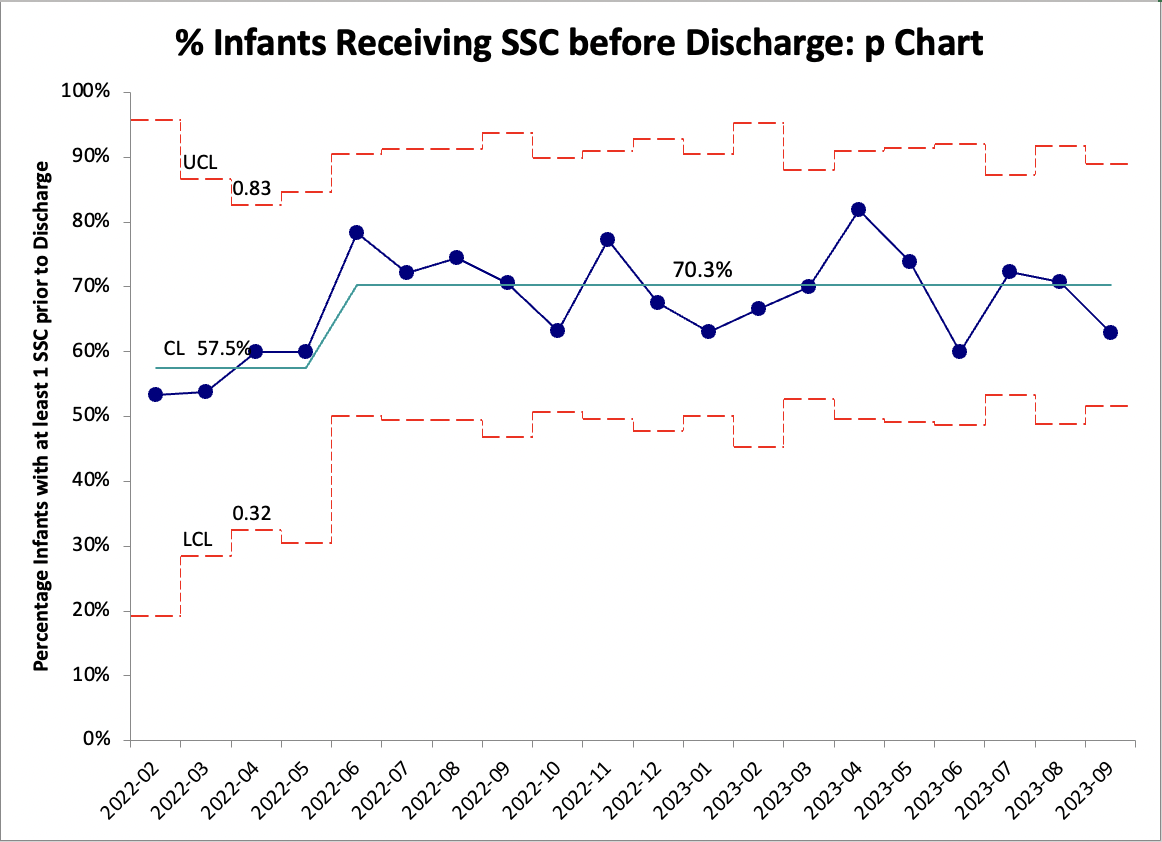Quality Improvement/Patient Safety
Session: Quality Improvement/Patient Safety 4
23 - Improvement in skin-to-skin care rates with implementation of education, resources, and family-centered policies
Monday, May 6, 2024
9:30 AM - 11:30 AM ET
Poster Number: 23
Publication Number: 23.2843
Publication Number: 23.2843

Morgan Cotter, BS, MS
Physician Assistant
Golisano Children's Hospital at The University of Rochester Medical Center
Rochester, New York, United States
Presenting Author(s)
Background: Kangaroo care, also known as skin-to-skin care (SSC), is an important and cost-effective way for families to positively impact their infant’s stay in the neonatal intensive care unit (NICU). Kangaroo care has been shown to have multiple benefits for infants including immune protection, improved growth and thermoregulation, vital sign stabilization, improved neurodevelopmental outcomes, decreased NICU length of stay, and reduced infant stress. There are also significant benefits to families of infants including improved maternal milk production, improved maternal pain control, and improved bonding among many others. Despite these benefits, kangaroo care is not prioritized as a medical intervention in many institutions. We decided to focus on improving family centered care by increasing our rates of kangaroo care, which has been shown to improve infant outcomes.
Objective: To increase the percentage of discharges with at least one episode of kangaroo care from our NICU’s baseline of 57.5% to 70%, and to reduce the average day of life on which kangaroo care is first initiated to 5 days of age (down from 8.1 days).
Design/Methods: A multidisciplinary quality improvement team was formed, which included neonatology physicians, advanced practice providers, nurses, respiratory therapists, social workers, and a family representative among others. Changes to unit policy, practice, education, and family/staff outreach were implemented using the Model for Improvement and iterative PDSA cycles. Data were collected via a nursing flowsheet in the electronic medical record and analyzed using Statistical Process Control charts created with QI Macros. Data were analyzed for special cause variation.
Results: Baseline data were collected from February 2022 to May 2022. By June 2023, the NICU achieved an increase in the percentage of discharges with at least one episode of kangaroo care from a baseline of 57.5% to 70.3%. While we have not yet achieved special cause variation in decreasing the average day of life for the first kangaroo care episode, we have had 6 months of average days of life below our center line since April 2023 and are continuing to track data.
Conclusion(s): The rates of kangaroo care were increased as a result of adjustments to unit policy, practice, education, and family/staff outreach. Additionally, our average day of life for initiating kangaroo care is demonstrating a trend toward a statistically significant decrease. The implementations that were put in place as a part of this initiative helped to improve family centered care in our NICU by improving rates of kangaroo care.
.png)

